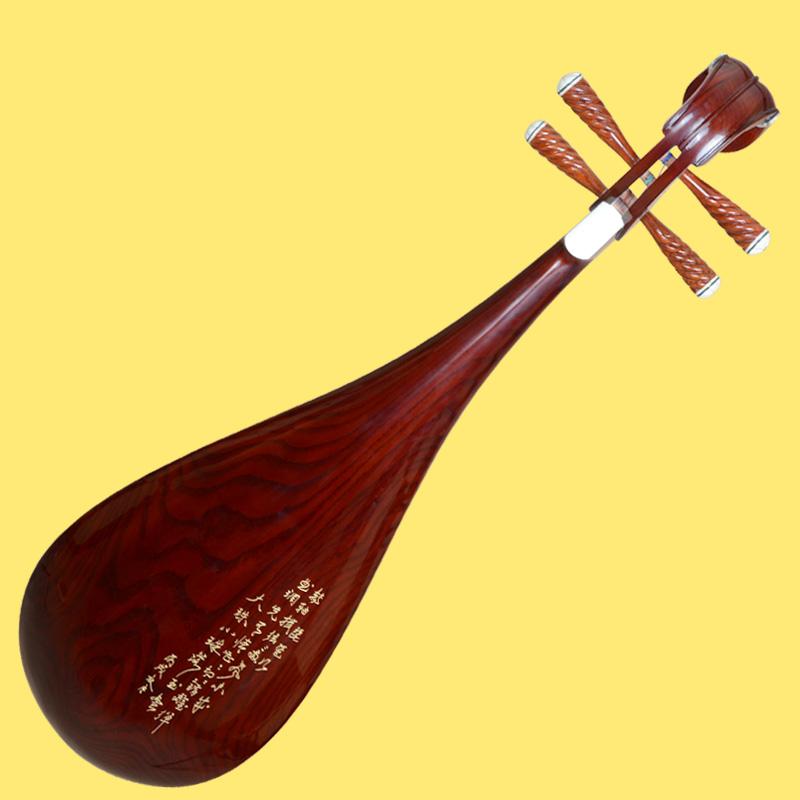How did the northern Shaanxi storyteller pipa sitting and hugging
Han Qixiang was once a representative of folk storytellers in northern Shaanxi. He has the ability to tell the story deeply and fascinatingly, to make the story climax one after another and the characters to be lifelike. expect. Storytelling is one of his strengths in comprehensive skills, and he makes full use of his strengths to compose new stories vividly.

When Han Qixiang sang the story of northern Shaanxi, he used the accompaniment of big three strings. It turns out that there are two popular forms of accompaniment for storytelling in northern Shaanxi, one is the pipa and the other is the sanxian. In terms of sound effects, the big three-stringed chord is loud and imposing. The sound of the pipa is weak, and the sentiment is refined. The former has a rough voice, the latter has a soft voice, one elegant and one vulgar, one weak and one strong. The sound strength and weakness seem destined to become the qualitative basis for them in the real competition of the weak. There is no doubt that speaking of new books, singing new things, and eulogizing the new world requires great momentum and unparalleled volume, and Sanxian is naturally the first choice. The elegant pipa is naturally left out.
What needs to be mentioned in particular is that the pipa playing method adopted by the storyteller in northern Shaanxi maintains an ancient form that is less mentioned in the history of music - sitting, holding and holding horizontally. The most common image in Tang Dynasty frescoes is sitting on the ground holding the pipa horizontally. The images sitting on the stool, one is "Han Xizai Night Banquet", and the other is "Tang Palace". Two images clearly depict the bench. It can be seen that the Tang Dynasty has already appeared in the form of sitting on a chair and playing the pipa horizontally, but it is not the posture of sitting and playing vertically in later generations. In the 20th century, the regions and music genres that maintained this ancient playing style were firstly Fujian Nanyin, and secondly, northern Shaanxi storytelling.
Unfortunately, because of Han Qixiang's influence, in the promotion of a series of blind artist classes he held, almost all the storytellers in northern Shaanxi changed to play sanxian. The ancient horizontally hugged pipa gradually disappeared from this place. The promotion of "Master Han", respected by the local storyteller group, has led to the disappearance of one of the oldest playing methods. Now, only Fujian Nanyin still retains the ancient playing posture of sitting and holding horizontally.
In the name of the country, the government, and the new era, Han Qixiang dared to challenge the superstitions of hundreds of years and dare to "scold the gods". Without hesitation and scruples, he cursed the gods who sheltered his ancestors and folks. This is his courage and his innocence. Decades have passed, and the storytelling he created has not continued to circulate; many of the things he opposed have been restored in the name of tradition. With today's re-understanding and re-interpretation of "intangible cultural heritage", Han Qixiang's tone of shabby and new is no longer recognized by the society, let alone by his fellow villagers. His colleagues still go to temple fairs to tell stories as before the times he lived in, and his fellow villagers still go to temple fairs to listen to books as before the times he lived in. The jokes he sang and listened to were the old stories about "truth, goodness and beauty" that he had fiercely opposed. Those arias he composed that no longer have an impact on the present are like the wind blowing past, and together with a less glorious era, they constitute a less memorable history.
There is only one point, his historical role is still in play: no artist ever again holds the pipa horizontally to tell a story!
This skill was interrupted by his influence, and no one continued a technique that could only be continued from generation to generation. Musicians who know the historical value of holding the pipa horizontally will feel unhappy when they see such a result, as if they were crushed by a big rock. In the era of clamoring to "remove the old and make the new one", this storyteller, who had a good heart but did a bad deed, sent a 10-century-old musical instrument into history. In our interviews in northern Shaanxi, we have seen those pipas covered with dust and broken strings, which have been silent for 30 years. People are eagerly watching the richness of craftsmanship turned into a dry history.
This is one of the prominent figures who lived around us, influenced the art of storytelling and influenced an era. We see that, once a representative figure becomes a representative, his actions and the effects of such actions are not merely his personal problems. His choice of musical instruments became the country's choice of "essence" and "dross" at a certain moment; his choice of storytelling content became the country's choice of old and new at a certain moment. When the era requires a strong sound, it must find an instrument that matches this requirement. If a musical instrument cannot undertake this historical mission, it will inevitably be eliminated. Han Qixiang is an enforcer who doesn't even realize the consequences of his actions for the hometown culture he loves.
We always have a radical attitude towards things that we cannot yet understand, and make arbitrary choices. I wonder if we can get a little reflection from this incident? (The author Zhang Zhentao is the director of the Music Research Institute of the China Academy of Arts)
 渝公网安备 50010702504639号
渝公网安备 50010702504639号